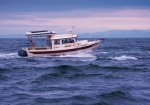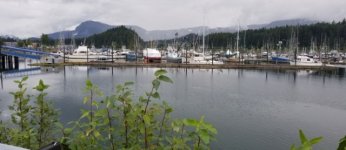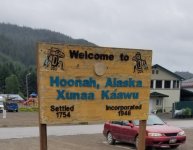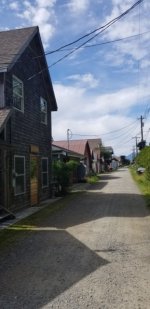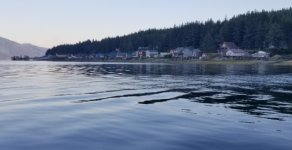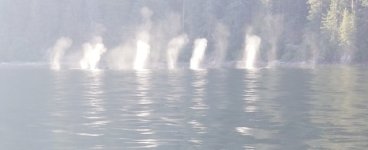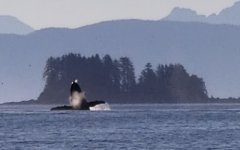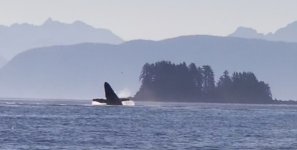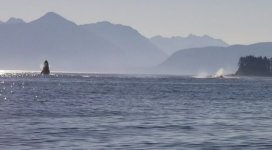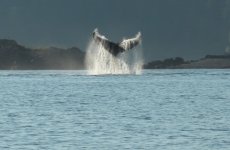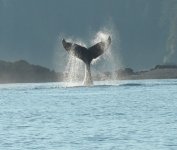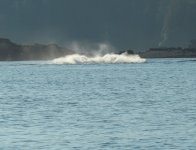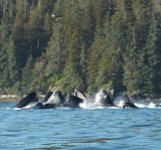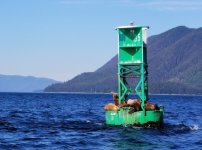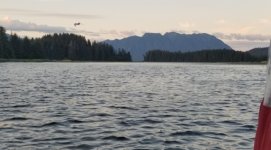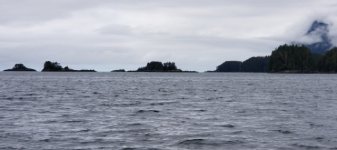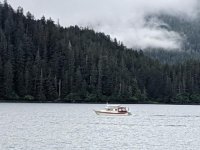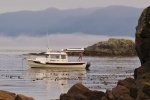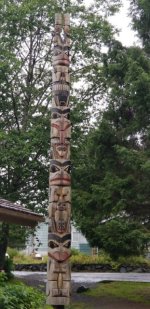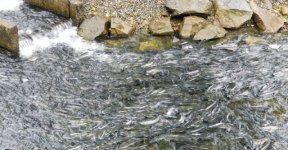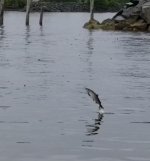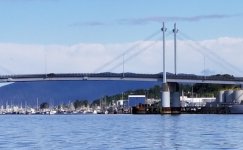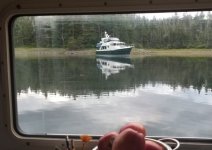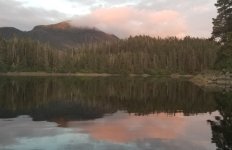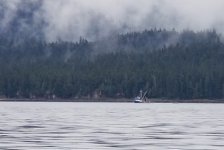Here is a list of the equipment that either came with or that we’ve added to Intuition. Since I’ve referenced some of them other places, I decided to provide a listing here.
Power
Honda 150 outboard primary
Honda 9.9 outboard for emergency use
Ground Tackle
Primary anchor and rode: 22 lb Mantus M1, 50’ of ¼” chain, 300’ of ½” 3-strand line
Our experience with this anchor has been very positive. It “bites” quickly and we’ve not had any instances of dragging or issues with resetting. It has a long shank and point. I have a few dents in the stainless steel bow shield – it’s a tight fit on our bow roller.
Backup anchors: 25 lb Lewmar Delta, 16 lb Fortress
Backup rodes (2): 20’ chain and 200’ of ½” 3-strand and 8-plait line
Windlass: Lewmar V700 Pro-Fish (we do not use the Pro-Fish drop function) – new this year. After mangling the rode due to a kink in my old ½” 3-strand line, I replaced the rope portion in Wrangell and have had no issues since.
Plumbing
Airhead composting toilet added last year. With the scarcity of pump-out facilities in BC and SE Alaska, we needed a better option than the original marine toilet, as we could fill up the 9-gallon holding tank in less than a week. Our CD-25 was not originally equipped with a macerator pump.
Bosch point-of-use 2.5-gallon water heater. We removed the original 6-gallon water heater a few years ago. It had become unreliable, and I was not a fan of the long run of water from the heater on one side of the boat to the sink/shower on the other side. Removing the old water heater provided significant additional storage. The Bosch fits neatly under the galley cabinet, uses comparatively little space, and has a short run (< 2 ft) to either the shower or faucet. Using it requires shore power or running our Honda EU2000 generator.
Communication
2 fixed VHF radios, one with AIS receive functionality.
Handheld VHF radios in ditch bag.
Floating handheld with DHC in the bag we will carry on the dinghy.
Navigation
Lowrance HDS-8 Chartplotter with Insight maps.
Simrad GO-9 Chartplotter with Navionics and C-Maps charts.
Google Nexus 7 Tablet running Navionics app.
We installed the Lowrance when we bought the boat. Its Insight maps have been relatively useless for this trip. I use it primarily for the radar, big-picture overview, and sonar. I originally went with Lowrance, as that was the radar I planned to add. We added the Lowrance 3G radar a few years later. One of the reasons for going with Simrad for the new chartplotter is that it’s compatible with my radar. The Simrad chartplotter came with a TotalScan transducer, which provides a very clear view of the bottom. This has been helpful as we evaluate where to drop anchor within an anchorage.
Dinghy/Tender
Zodiac Wave 310 Aero with air floor (10’2”). This was a recent purchase after adhesive joints in our Alaska Series 270TDS tender began to break down after 10 years of storage in our (hot, humid) St. Louis garage. We’ve been happy with our limited use. I like that it has a drain for water that accumulates from rainfall.
Torqeedo 1103CL electric motor – limited use, but very pleased to date. This motor is supposedly equivalent to a 3hp motor and separates into components that weigh only 20 lbs. This makes it much easier and less stressful to mount it to the tender each time it’s used. At 25% power (225 watts), it pushes our tender at approximately 3.4 mph.
Heating/Cooking
Dickinson 2-burner stove top
Dickinson Newport P9000 propane heater
I constructed a dedicated propane locker in 2017 following (my understanding of) ABYC standards. The locker sits where a seat was located on the aft port side of the cockpit. Solenoid in the locker is controlled from a switch in the cabin. 4 sensors are located in the cabin, bilge through which hoses run, and the locker. We understand the concerns with propane. In our case it seems to provide the best compromise for the type of cooking we like to do, lack of odor, and single fuel for cooking and heating. Also, the Dickinson “fireplace” on the heater sure adds ambience.
We also have a small electric ceramic heater for use with shore power.
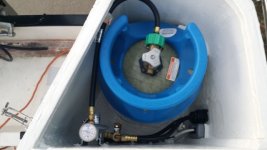
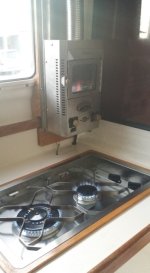 Refrigeration
Refrigeration
Small Norcold refrigerator (original to boat)
35 quart Engel Deep Blue cooler in cockpit for drinks and other food items.
Electrical
Single AGM starter battery
Two 90AH Duracell AGM batteries (House)
1-2-Both battery switch
Battery monitor - Victron Smartshunt. I had problems previously with Victron monitors: not through any fault of the product, but my bilge doesn’t stay really dry and the contacts to the comm cable would corrode. I mounted the Smartshunt, which communicates via Bluetooth to my phone, in a small Pelican waterproof box, drilled holes in the box for wires to the battery, and sealed it with silicone. Thus far it’s working well.
I have a new Blue Sea ACR and compatible battery switch at home and had planned to install them prior to this trip. I ran out of time, so we stuck with the “1-2-Both” arrangement we’ve had and that has been reliable for us. I look forward to installing the new ACR and not having to worry about switching the battery switch regularly.
Solar Generator
One of my projects earlier this year. I have a Goal Zero Yeti 400 that I have used for several years, along with 3 20-watt foldable solar panels. We use it primarily for running a CPAP and recharging electronic devices. I wanted something with more capacity, since I didn’t expect to be able to fully recharge the battery every day. I also wanted to keep two laptops charged. The new generator I constructed uses a 100AH Battle Born LiFePO4 battery. I included a 600 watt inverter and a Victron MPPT solar charger controller. I mounted a flexible 110 watt solar panel to the top of the bimini. The battery itself sits in the storage area below the dinette, and the input/output box sits along the wall below the dinette table. I connect the battery to the input/output box using Anderson PowerPole connectors. While our current need is on the boat, I built it so that it would be portable for use in other places. I don’t think I saved any money building this versus buying a comparable off-the-shelf unit, though I got the exact components I want and feel confident about replacing any components in the future.
Our experience with this has been extremely positive. The solar panel seems to fully recharge it on even cloudy and rainy days. Aside from nightly use of a CPAP, we use this to recharge two laptop PCs, 3 tablets, 3 cell phones, and a 12V box fan (didn’t think we’d have need for that). Having this extra power available allows us to worry less about the state of our house battery bank, which powers lights, refrigerator, and marine electronics.
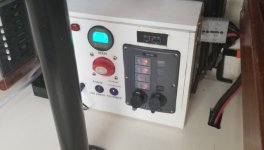
Other
Pool Mat on cabin and cockpit floors – softer and keeps feet dry when water inevitably ends up on the floor.
Storage Box in the cockpit.
I built this box specifically to store the generator, kicker/generator gas tanks, and grill. It also holds a few other miscellaneous items (extra line, water hoses). I sealed it all with expoy and made the cover using Shelter-Rite material. It doubles as a chaise lounge for Kel.

Insulated coating on walls to limit condensation. Several years ago, before a winter trip to Florida, we sprayed “Ceramic Insulation Coating” onto the interior walls, with extra layers on the walls of the berth area. While it doesn’t really insulate a great deal, it cuts down considerably on the condensation when it’s warm (and humid) inside the boat and cool outside.
Kitchen
A couple gadgets we bought before this trip and which have proven quite valuable. We learned about these during the Hontoon CBGT in March:
Sink cover
https://www.amazon.com/gp/product/B07F8 ... UTF8&psc=1
This covers the sink when not in use to allow additional counter space while still allowing limited use of the sink. My sink faucet occasionally drips, so this is a better solution than the cutting board I had originally built to fit over the sink.
Plastic bag holders
https://www.amazon.com/gp/product/B07HJ ... UTF8&psc=1
Given that we use resealable plastic bags to store various food items and leftovers, these gizmos reliably hold the bag open to allow mess-free filling of the bag.
